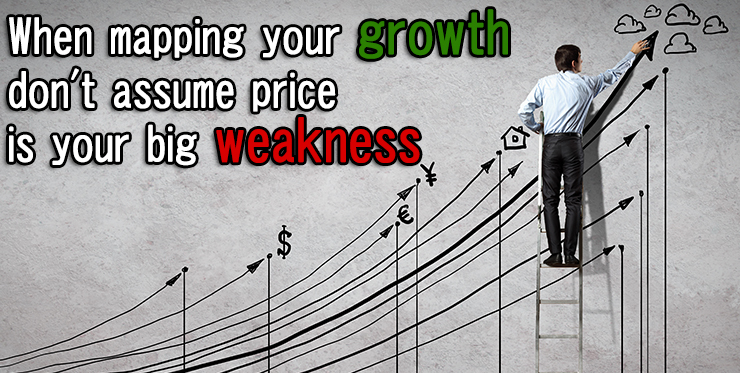I recently accepted an invitation to sit on the Advisory Board of a local small business. I’ve been watching this enterprise since they started three years ago and have been consistently impressed with their creativity, persistence and pragmatism so when the owner asked if I would join the board I agreed.
Since they are seeking funding for the next stage of expansion, the first thing we did was to walk through her pitch deck together.
As I expected, the deck was creatively designed and well thought out. But in the SWOT analysis she had listed “price” as one of the company’s weaknesses.
Now I’m familiar with their product, which is in the specialty beverage category. I’ve happily paid full price for the product for over two years. And so have a lot of other people. The company has been highly successful in retailing the product through specialty stores and cafes, as well as having a large number of eateries that serve their product as part of their menu offering. So why, I asked her, did she consider price to be a weakness.
We discussed the quality standards of the product; natural ingredients sustainably sourced, exacting calibrations in the recipe, a packaging process that was hand controlled and designed to deliver the freshest product possible, and concluded that other than buying ingredients in higher quantity to decrease cost there was very little they could do to alter their margins. And yet, I didn’t see their price point to be a drawback.
Here are the three questions I challenged her to answer:
1. Does your product support your price point?
The company had been looking at price in comparison to other beverages in the same category and their price point is in the top 25 percent. And yet, they have loyal brand ambassadors just like me who love the product so much that they’ll intentionally seek out a retailer or café that carries them. In fact, they have enough of those people that, in spite of taking a hit in their second year on a failed retail location and the founder having a baby and dialing back her involvement for the year following, their revenue has gained a little ground each year they’ve been in business. The people who love their product enough that they will go out of their way and pay the higher price to have it have carried the business through two difficult years. Of course our conclusion was yes, the product supports the current price point.
2. Does your business plan support your price point?
The key to increased income, for individuals or businesses, is to increase reach and impact. Clearly the impact this product was having on the people they were able to reach was great enough to justify the expense. And this impact has not been based on a trend or cult following that can easily be spirited away – it’s founded on loyalty to the product itself. The weakness was actually in the reach, not enough people are experiencing the product to result in significant growth for the company. Without a strategy to get more people to sample the product and fall in love with it they are not likely to realize their goals. So the business model has to expand to include more exposure through tastings and events. Luckily this was already in the strategy presented in the pitch deck, and was just a part of what they are looking to fund.
3. Does your brand support your price point?
Until people sample a product they can only judge its value by what they see and hear. If brand presentation and reputation create an anticipation of enjoyment that equals or exceeds the price point, people will pay the price. The way this product has been packaged and presented came from its origins as a farmer’s market offering. It worked for that market, but it isn’t working on retail shelves. They haven’t had a PR or marketing strategy in place, other than directly approaching outlets and eateries to carry the product. And the places carrying the product don’t have signage or brand positioning for it.
Ultimately, after working through those three questions it became apparent that brand is the greatest weakness (something this founder already knew and is working on) and the business model which currently has the brand cast in a “best kept secret” role, is a close second. I anticipate that by addressing those two areas we’re going to see tremendous growth in the company.
What parallels do you see in your brand and your beliefs about pricing? Do you have a loyal following who happily pay your price and need to focus on building greater reach and brand awareness that aligns with your price point? Or do you need to address quality or even increase your price to align with your quality and brand?
